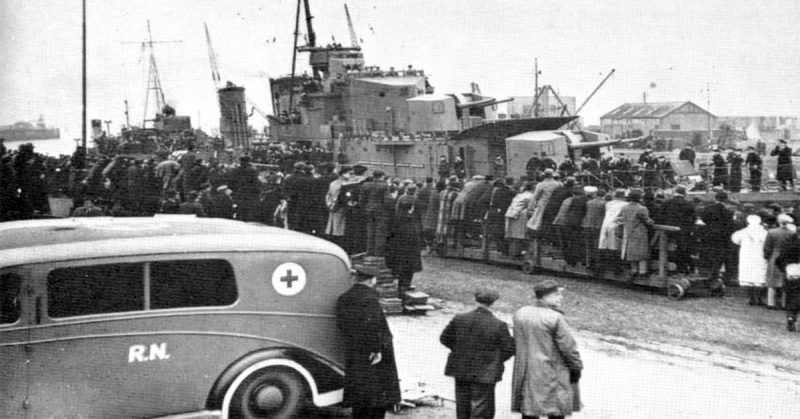In 1940, a tanker was transporting 299 British POWs to Germany. As it passed through neutral Norwegian waters, the British mounted a successful rescue operation, so Hitler retaliated by punishing Norway.
Although WWII began in 1939, Britain and France were anxious to avoid any conflict with Germany. What resulted was the “Phony War” – a series of minor skirmishes where both sides tested each other.
Hitler wanted a peace treaty with Britain, but the latter wouldn’t budge unless he withdrew from Poland. Resorting to more persuasive means, he ordered the German Navy to raid British merchant ships on 26 September 1939, but to do so in accordance with prize rules.
This meant they couldn’t just slaughter everyone and take everything. The Germans had to first evacuate the enemy crew, take what they could, then sink the enemy vessel. After that, they had to ensure the crew’s rescue.
On September 30, the Graf Spee (a German heavy cruiser) seized the Clement (a British cargo ship) off the coast of Brazil. The Clement broadcast the RRR signal (I am under attack by a raider) before her captain and chief engineer were taken hostage, while the rest of the crew were put on lifeboats.
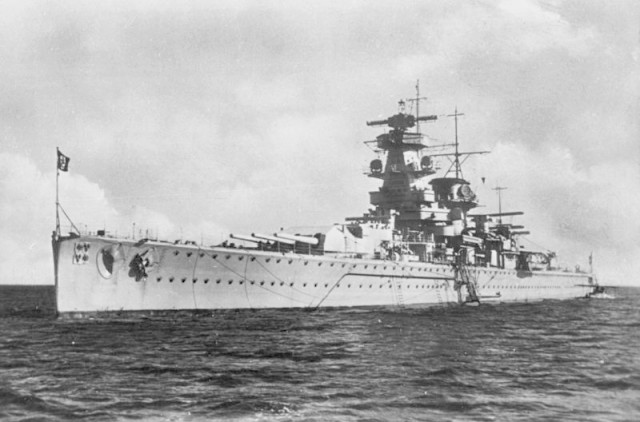
Then the Graf Spee fired 30 rounds of her 28 cm and 15 cm guns at the Clement, finally sinking her with two torpedoes. The German captain, Hans Langsdorff, then sent a distress signal to the naval station at Pernambuco in Brazil so they could come and rescue the British sailors.
By October 5, British and French ships were hunting down Langsdorff. That same day, the Graf Spee took the Newton Beech cruiser and turned her into a prison hold. On October 7, the German ship captured the crew of the Ashlea, then sank her. The next day, the Graf Spee returned to the Newton Beech, removed the prisoners then sank the British ship.
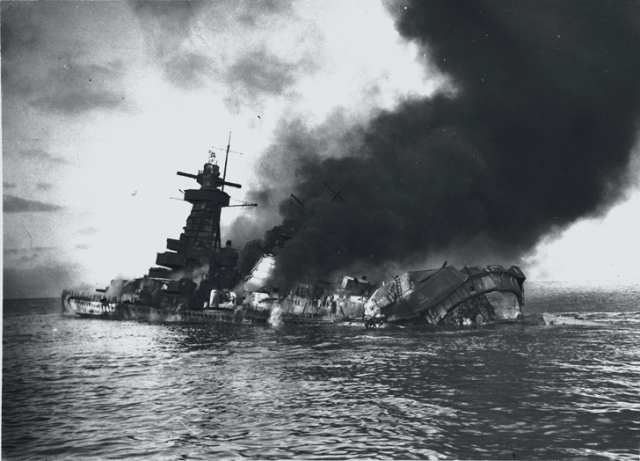
By October 10, the crew of the Huntsman steamer were unhappy guests aboard the Graf Spee. By now, the German cruiser had the crew of three British merchant vessels aboard and could no longer accommodate them. She therefore rendezvoused with the Altmark (an oil tanker and supply ship) on October 15 to refuel and to offload the POWs. Two days later, the Huntsman was sunk.
The Graf Spee went on to destroy more British ships, her last victim being the Streonshalh freighter on December 7. It would prove to be Langsdorff’s undoing. The Streonshalh contained secret documents regarding Allied shipping routes, so the Graf Spee headed off to Montevideo where she was badly damaged by British cruisers on December 13. Three days later, she was scuttled by the captain.

With the Graf Spee gone, the Altmark headed back to Germany with her prisoners aboard, but that was no easy task. Britain still dominated most of the seas and with the war on, many of her naval ships were either in home waters or trying to blockade Germany.
Her captain, Heinrich Dau, decided that the best way to get home was to go around the north of Great Britain. To do that, he had first to pass the Norwegian littoral, which was where he was spotted by three British Lockheed Hudson Mk.IIs from RAF Thornaby on 14 February 1940.
The British demanded that the Norwegian government stop the German ship, claiming they had citizens on board. Though Norway was desperate to remain neutral, it gave in to the British, but very reluctantly. On February 15, the Altmark was boarded three separate times by the Royal Norwegian Navy.
The first was by officers of the HNoMS Trygg (a torpedo boat) which intercepted the German ship off Linesøy Island. When it passed Sognefjord, the Altmark was again boarded by the HNoMS Snøgg, yet another torpedo boat. As it cruised off Hjeltefjord, it was boarded for the last time by Admiral Carsten Tank-Nielsen and members of the HNoMS Garm, a destroyer.
Wary of a belligerent Germany, none of the Norwegian boarding parties did a thorough job. They just wanted the whole business over with as quickly as possible so the British would get off their backs. They were therefore happy to accept Dau’s word that his was a commercial ship on its way back to Germany and that no POWs were aboard.
Down in the ship’s hold, however, the prisoners shouted, stomped, and banged the walls, but to no avail. The Norwegians either didn’t hear them or they chose not to. Whatever the case, none bothered to go down into the hold.
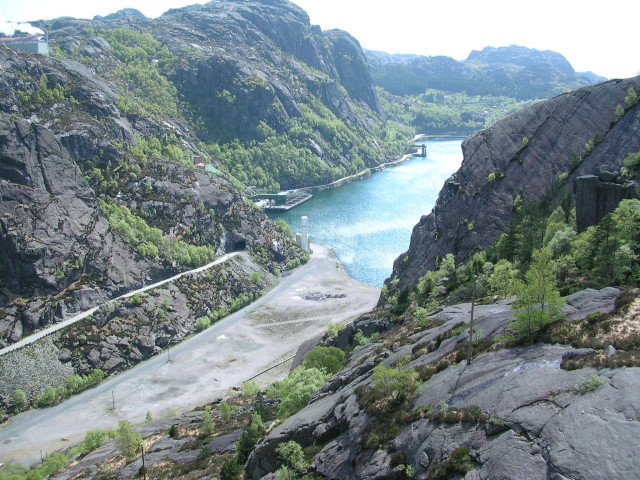
Even had they done so, international law didn’t forbid the transfer of POWs across neutral waters. Besides, it wasn’t as if the Norwegian government was obligated to rescue non-citizens, so they gave the Altmark permission to continue.
Later that day, British planes sighted the ship off Egersund and alerted the Royal Navy. Destroyers were sent out led by the HMS Cossack under Captain Philip Vian, so the Altmark tried to escape by going into the Jøssingfjord in southwestern Norway.
Furious at this intrusion, Norwegian ships aimed their torpedoes at the Cossack to prevent the German vessel from being boarded. Winston Churchill ordered the boarding to continue, but to avoid firing on the Norwegians if possible.
So Captain Vian asked permission to board the Altmark with a team of Norwegians, but they refused. The following evening, the German ship ran aground in the shallow waters of the fjord. Seizing their chance, the British boarded at 10:22 PM.
The 16th of February 1940 went down in history for the type of fighting that took place aboard the Altmark. At such close quarters, guns were out of the question, so the British and the Germans engaged in hand-to-hand combat. The British also used cutlasses, the last recorded incident of the Royal Navy ever doing so.
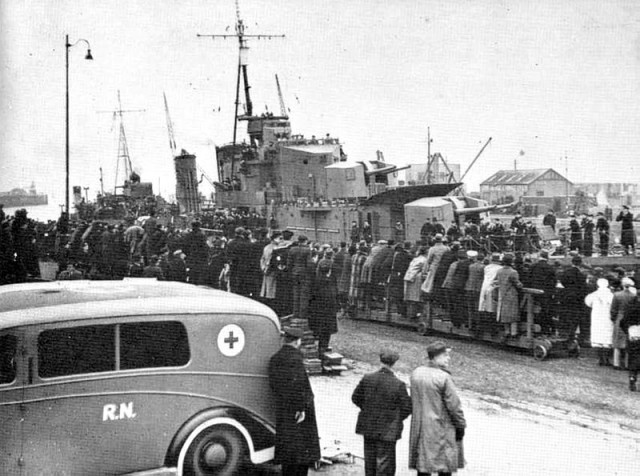
Against such weapons, the Germans surrendered, but at a cost of seven dead and eleven wounded (six seriously so). 299 POWs were rescued, and the British left Norway on midnight of February 17, but now Norway was in serious trouble.
The Norwegians were angered that their neutrality had been infringed, but they did not want to be dragged into a European war. Nonetheless, the Altmark incident sowed doubts about Norwegian neutrality among the Allies, as well as in Germany. Both sides had contingency plans for military action against Norway, primarily to control the traffic of Swedish iron ore, on which the German armaments industry depended in the early stages of the war.

The Altmark incident convinced Adolf Hitler that the Allies would not respect Norwegian neutrality. Hitler, who had decided on 14 December 1939 on the invasion of Norway, ordered intensified planning on 19 February 1940 for attacks on Norway and Denmark, which eventually took place on 9 April 1940 under the code name Operation Weserübung.
The Altmark incident gave the British a short-lived but sorely needed morale boost during the Phoney War. The incident also had a lasting propaganda effect in German-occupied Norway during the war. When the Norwegian collaborationist government tried to neutralise their nickname “quislings” by using the location of the skirmish, Jøssingfjord, to coin the derogatory term “jøssing”, referring to pro-Allies and anti-Nazis.
Their efforts backfired, as “jøssing” was immediately adopted as a positive term by the general public, and the word was banned in Norway from official use by 1943.
